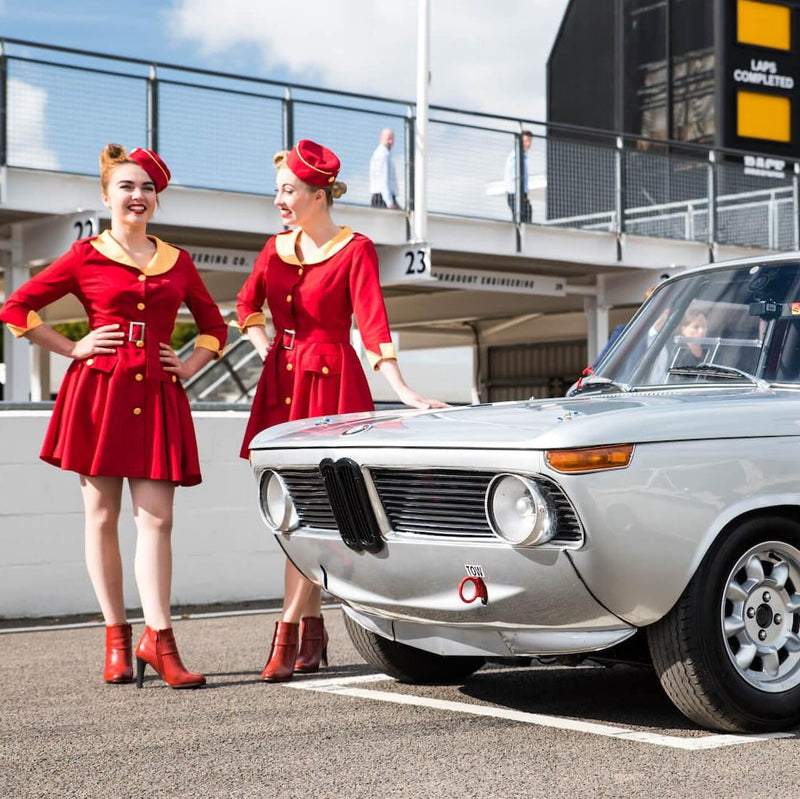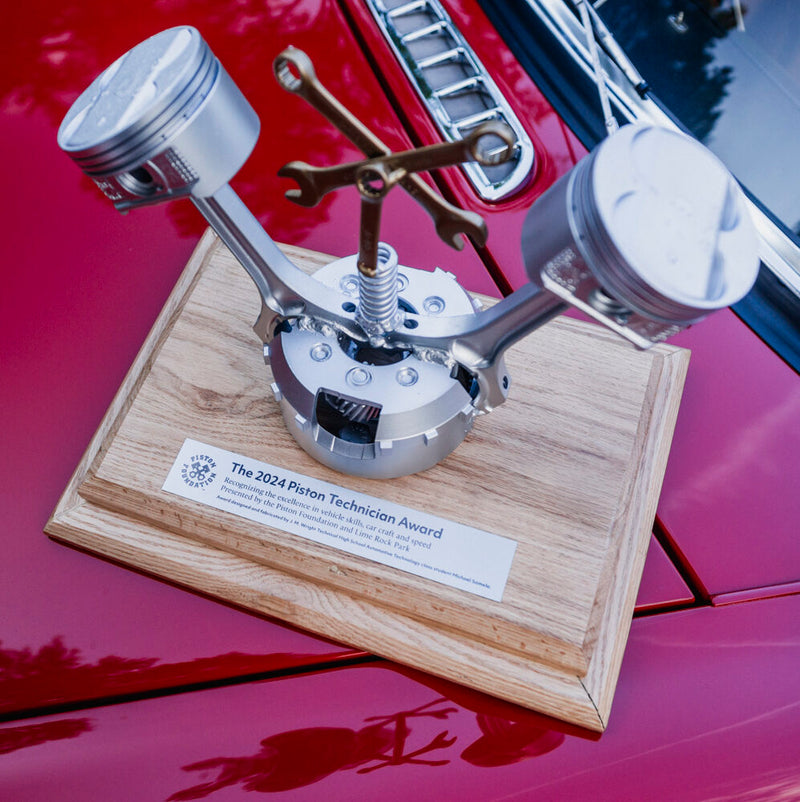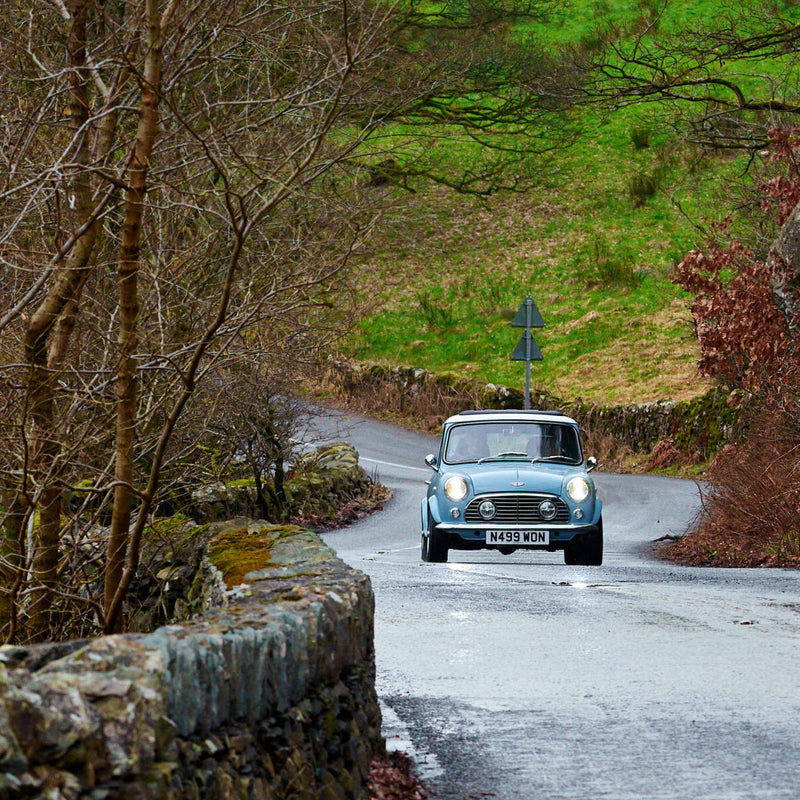It comes to life, breathing heavily through eight cylinders and thumping out a low growl as it warms. The machine is wide and low, and despite the expansive wedge nose and boxy flanks it’s got some curves too. The saturated red only further enhancing its menace—colors like this in the wild spell out a warning, but the few of us that are stood close to it—while those around us are giving their attention to more exotic species nearby—are in no danger, for this animal has is after a different type of prey…





It was built for speed as well as endurance, and its capacities for both are abundant. It also has a long line of racing pedigree and there were plenty of them in Le Mans and Le Mans, but this is no Porsche 917. It is no Ford GT40 either, but there are some close family ties between them. The car in question is a Lola of course, a T70 to be exact (Eric Broadley’s GT design is the one that would become the GT40) and last weekend it lined up on the grid for the Peter Auto Imola Classic with its peers and siblings.




The cars that rolled out of the small Cambridgeshire town of Huntingdon are not the most famous prototype racers ever, neither are they the poster boys of any racing generation, but along with other marques—like Chevron—they are the bread and butter of these historic racing series (to say nothing of their presence in period), and today’s classic series’ starting grids would be a poorer place in their absence.
To talk about these cars as only “grid fillers” would be tremendously disrespectful though, and while they may not garner the fanfare of the more exclusive marques and their championship-winners, the history of these constructors is no less fascinating, and their contribution to the fabric of racing is no less vital than the more beloved cars of the motorsport world. Both marques found success over the years with single-seaters—particularly for Chevron in the sorely-missed F5000 championship, along with IndyCar triumphs for Lola under the Newman/Haas flag in the hands of Mario Andretti—but here at Imola it is the sports car products of these two brands, especially the Lolas, that were represented in force.






The aforementioned T70 is, to my eye at least, one of the most beautiful racing cars ever built, and I was treated to several in Italy, mixed in with the Ford GT40s and later the Porsche 917s that they battled with way back when. Despite early success with the Spyder version with F1 and motorcycling champion John Surtees at the wheel, Eric Broadley’s creation could never really take a consistent fight to the Americans or the Germans. Driver Brian Redman cited the reliability of the Chevrolet power plant as being the only major weakness in an otherwise fabulous machine, and he ought to know what he’s talking about, having driven just about everything in his career from McLaren F1 cars to Ferrari 312PBs to BMW CSLs).





It is indeed no surprise that Broadley’s T70 design was a good one, as the Lola founder had previously helped create the Ford GT40 with Roy Lunn, a car that was based heavily upon the Lola MK6 GT, arguably the first mid-engine, high-displacement GT car, using an engine setup and size that had up until that point only been seen on grand prix cars. In a nutshell, Ford had paid Broadley to put his company on hold while the Ford work took place, and so the MK6—with its cutting-edge aluminum monocoque and stressed member engine setup straight out of the F1 design book—was only a short-lived production.
Though my affections will always be spent on the T70, Lola was also successful with the T210/T212 cars in the smaller 2.0L-capacity European Sports Car Championship. This model is also well represented in the Peter Auto series today (some of these photos are from the Lolas running at Spa earlier this year in the same series), and in its racing life the cars earned drivers’ championships with Swedish star Jo Bonnier and a certain Dr. Helmut Marko, as well as the constructors’ crown with the help of Ronnie Peterson.

The T280 and T290 cars (like the one above with a tail of previously unburnt fuel following it) followed with more sports car racing success, and the 1960s and ’70s, the era covered by the grids at Imola this past weekend, represented somewhat of a golden age for Lola and for sports car racing in general. The sight and sound of these machines tearing through the historic bends here was a tremendous treat to see in person, and as the T290s battled against Porsche 935s and Ferrari 512s under a rainbow-crowned sky, it was impossible to discount the value of these cars as grid fillers.


Of course, the Lola story continued, and still does, finding success in all number of formulas and racing disciplines, from rallying to F1. This past weekend though, it was that wonderful era of competition where the marque was at its most prolific, in a time when a great many constructors were spending huge budgets on cutting-edge racing cars, not to mention some of the sport’s most enduring and noteworthy drivers being behind inside them. They may not be as universally revered as others from Stuttgart or Maranello, but there is no question that the most successful British customer car provider in the history of the sport deserves a seat at the table, and I look forward to seeing these cars in action for many years still to come.






























































